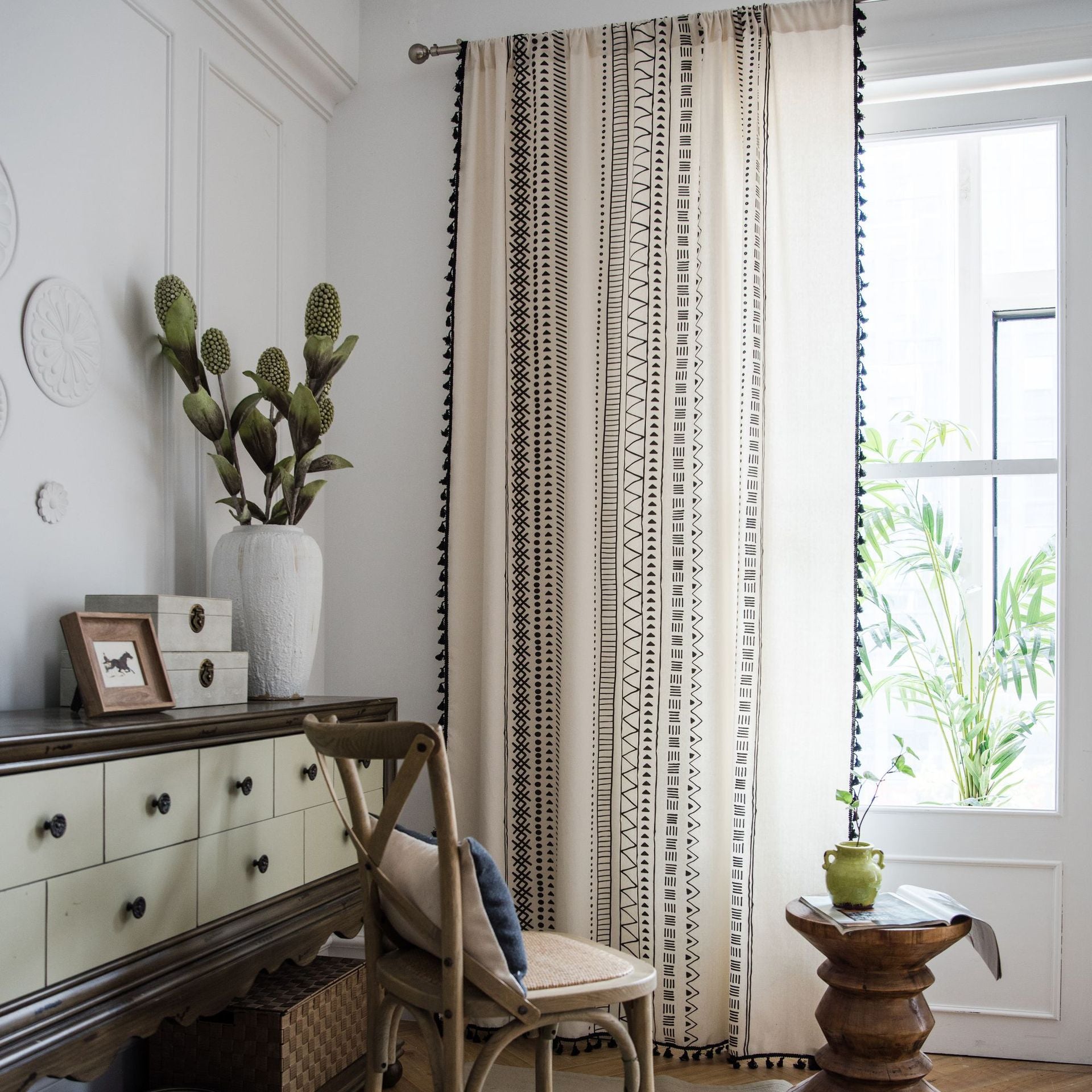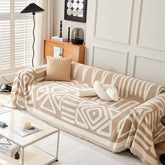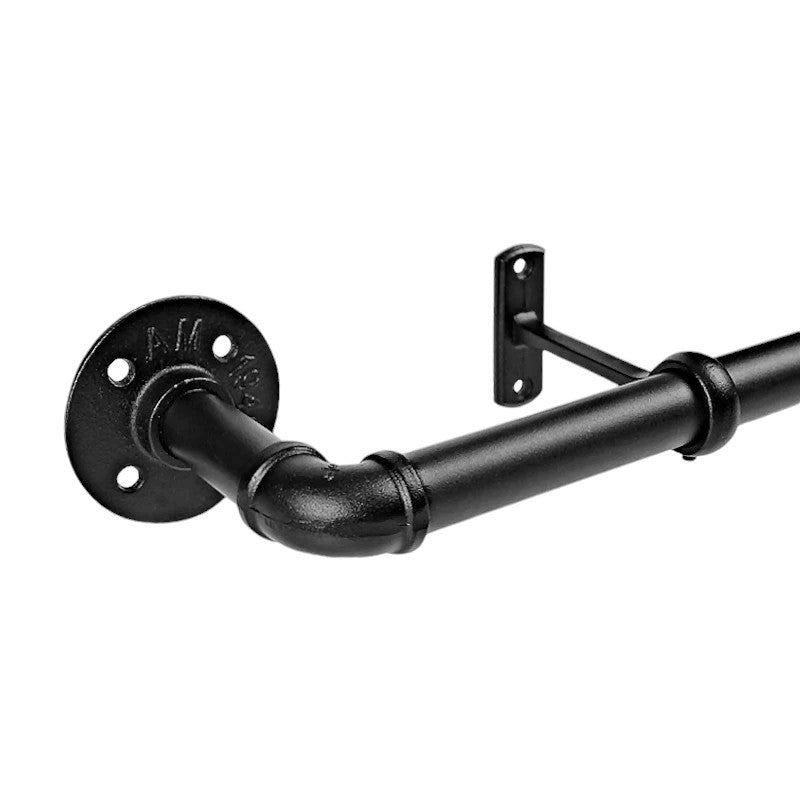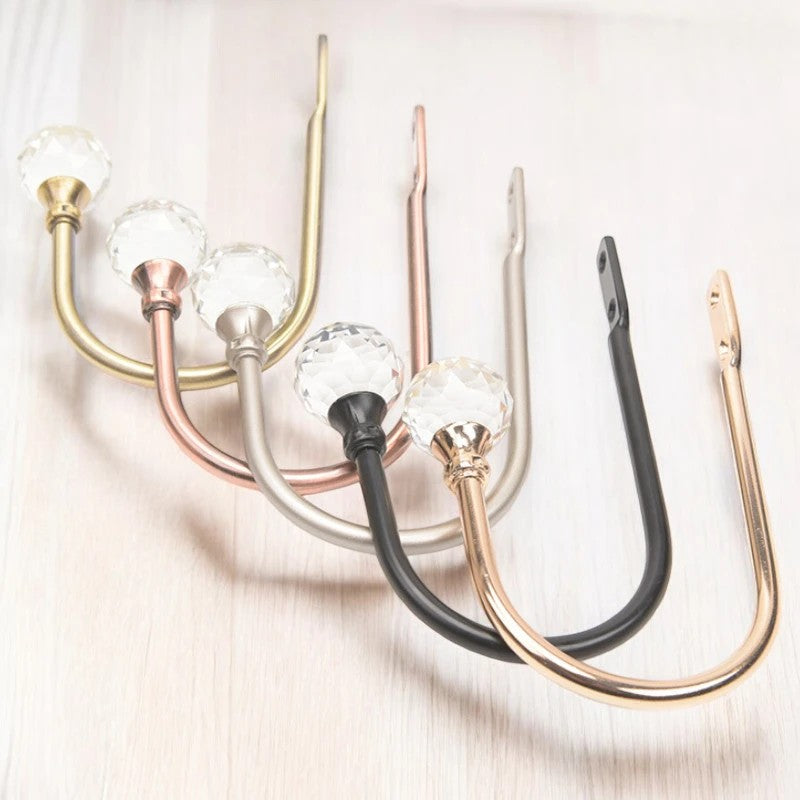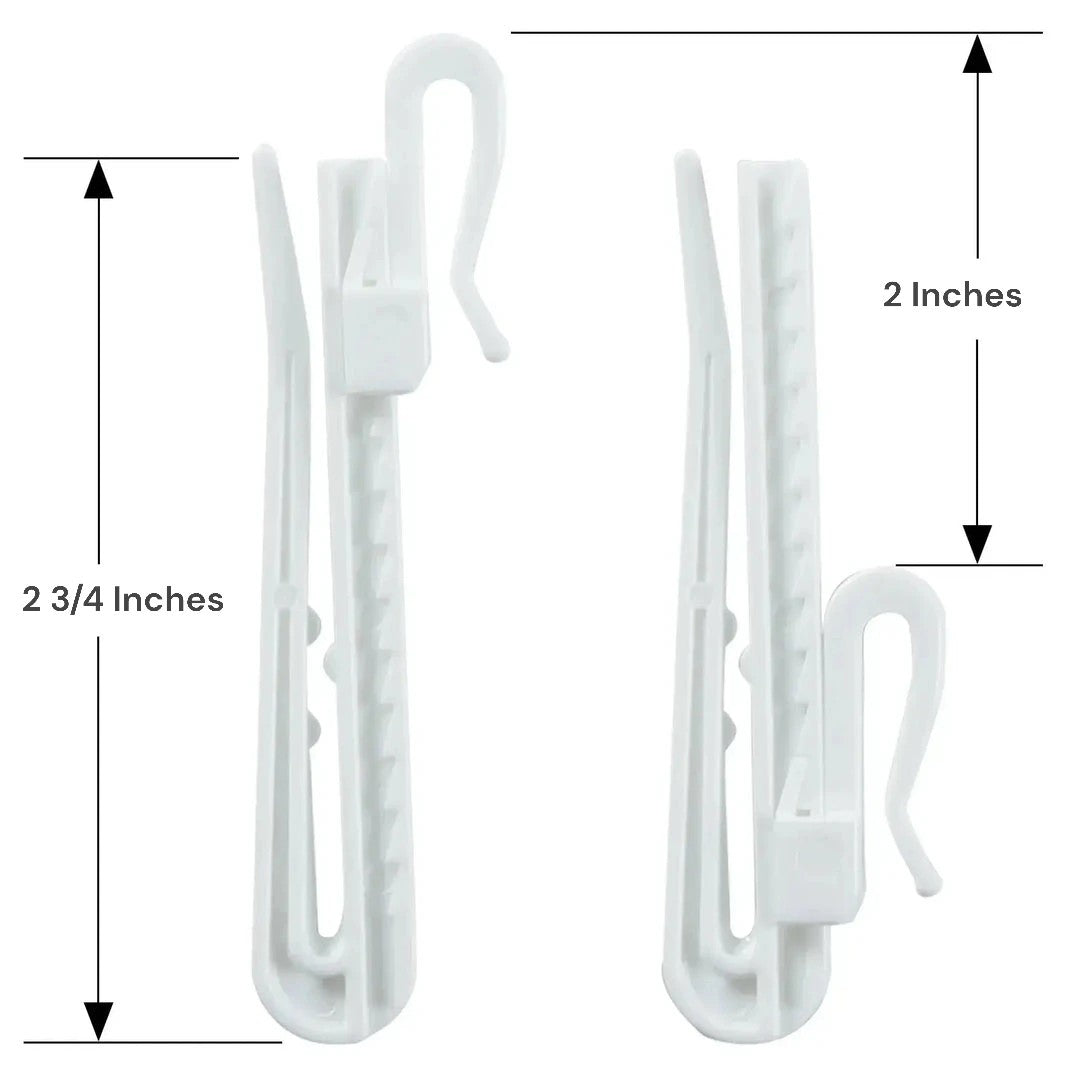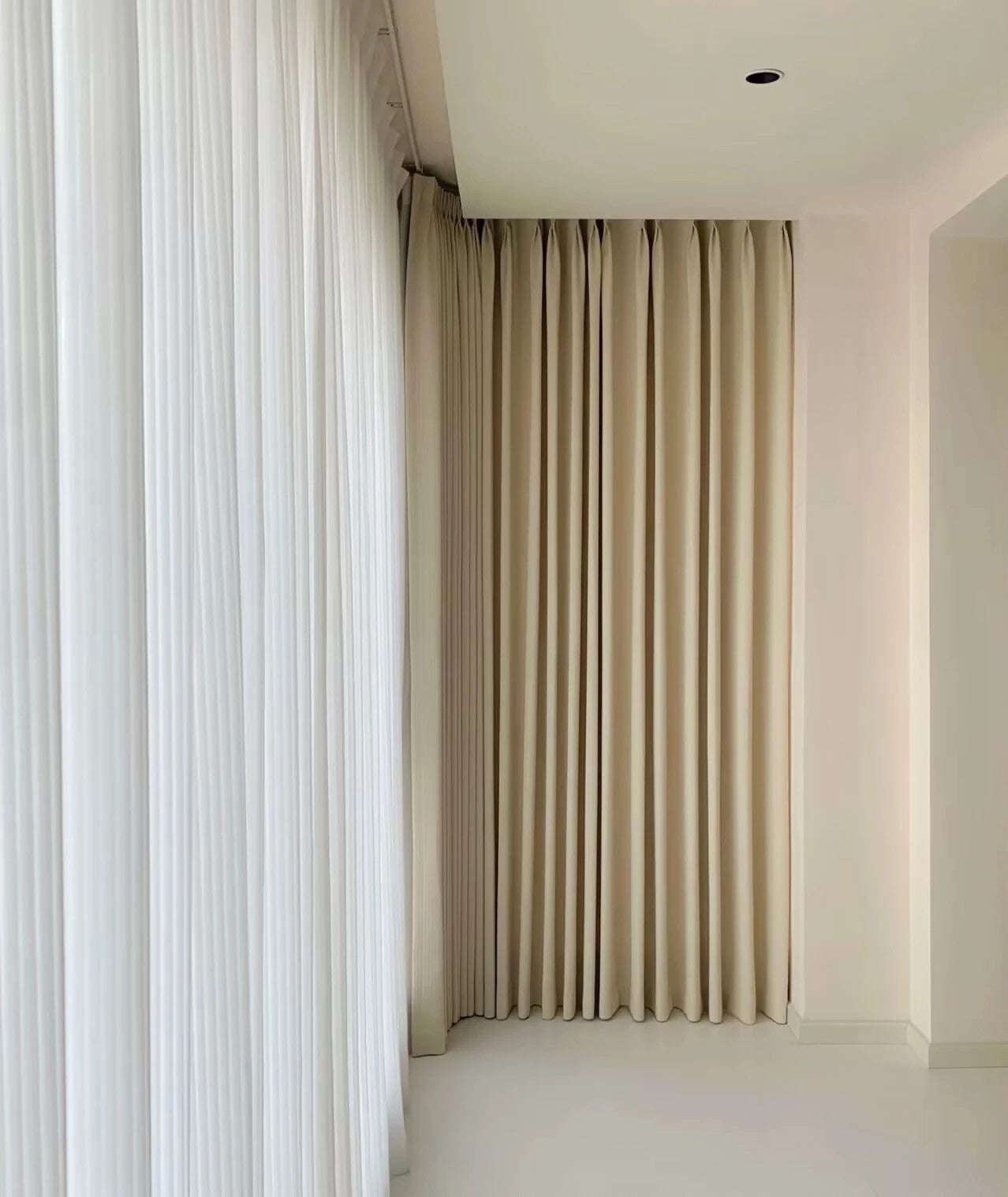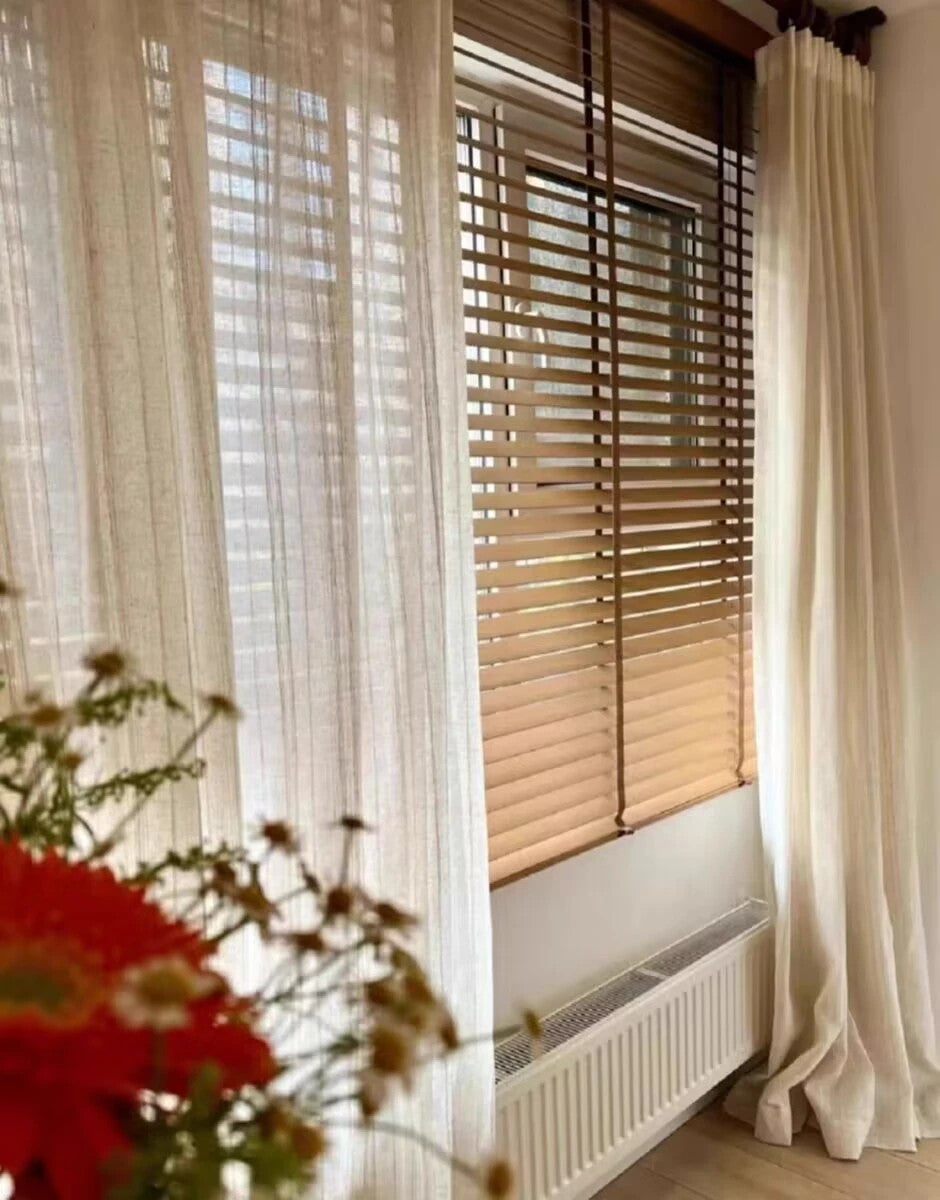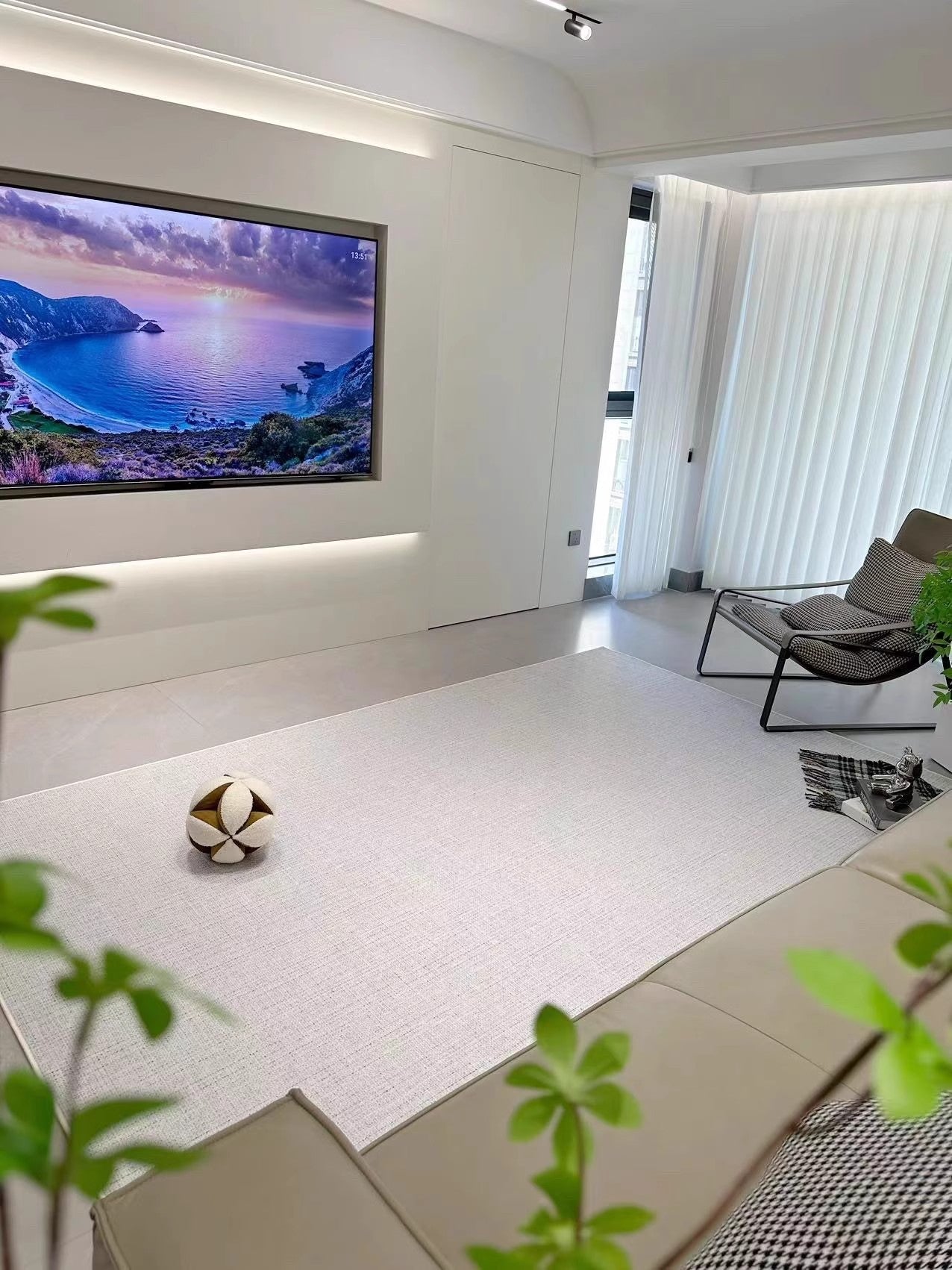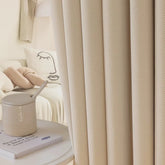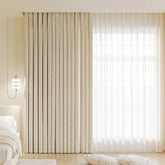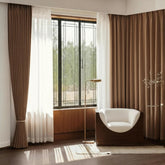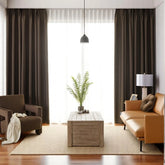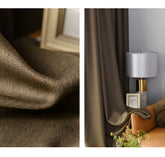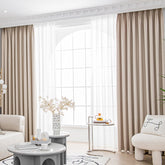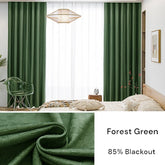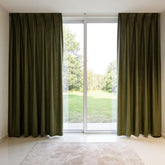Leitfaden zur Auswahl der richtigen Vorhänge für verschiedene Klimazonen
Haben Sie Schwierigkeiten, die perfekten Vorhänge für Ihr Zuhause zu finden, angesichts der unterschiedlichen Klimazonen in den Vereinigten Staaten? Wir verstehen, dass die Wahl von Vorhängen, die für verschiedene Wetterbedingungen geeignet sind, eine Herausforderung sein kann. Aber keine Sorge, wir sind hier, um Ihnen bei der richtigen Entscheidung zu helfen.
Die Auswahl der richtigen Vorhänge für verschiedene Klimazonen erfordert eine sorgfältige Berücksichtigung verschiedener Faktoren. Indem Sie den Zweck des Raumes, die Fenstergröße, die Lichteinstrahlung, den Stofftyp und den gewünschten Stil berücksichtigen, können Sie Vorhänge finden, die nicht nur das Aussehen Ihres Zuhauses verbessern, sondern auch den gewünschten Komfort in jedem Klima bieten.
Wichtige Erkenntnisse:
- Wählen Sie Vorhänge basierend auf dem Zweck des Raumes und dem gewünschten Maß an Wärme und Gemütlichkeit.
- Berücksichtigen Sie den Stofftyp, der dem Klima standhält, wie synthetische Fasern oder Mischgewebe.
- Wählen Sie die passende Vorhanglänge, um den gewünschten Look und die Funktionalität zu erreichen.
- Entdecken Sie verschiedene Vorhangkopf-Stile und wählen Sie einen, der zur Einrichtung Ihres Zimmers passt.
- Achten Sie auf Farben und Muster, um sicherzustellen, dass sie mit der Gesamtästhetik harmonieren.
Vorhänge für heiße Klimazonen
Wenn es draußen brütend heiß ist, ist es entscheidend, Vorhänge zu haben, die effektiv Wärme blockieren und Ihr Zuhause kühl halten. Wärmeblockierende Vorhänge sind eine beliebte Wahl für heiße Klimazonen, da sie so konzipiert sind, dass sie Sonnenlicht reflektieren und verhindern, dass Wärme in Ihren Raum eindringt. Diese Vorhänge sind typischerweise mit einer speziellen thermischen Beschichtung versehen, die Ihre Fenster isoliert und die Innentemperatur angenehm hält.
Eine weitere Option für heiße Klimazonen sind kühlende Vorhänge. Diese Vorhänge bestehen aus leichten oder transparenten Stoffen, die eine freie Luftzirkulation ermöglichen und gleichzeitig Privatsphäre bieten. Sie schaffen ein sommerliches Gefühl und können helfen, eine entspanntere Atmosphäre in Ihrem Zuhause zu schaffen. Wenn Sie etwas natürliches Licht bevorzugen, können transparente Vorhänge das Sonnenlicht filtern und dennoch ein gewisses Maß an Privatsphäre bewahren.
Bei der Wahl von Vorhängen für heiße Klimazonen ist es wichtig, den Stofftyp zu berücksichtigen. Stoffe wie Baumwolle, Leinen und Polyester sind beliebte Optionen, da sie leicht und atmungsaktiv sind.
Synthetische Fasern oder Mischgewebe sind ebenfalls eine gute Option, da sie widerstandsfähiger gegen Ausbleichen sind und der starken Sonne standhalten können. Um sicherzustellen, dass die Vorhänge effektiv Wärme blockieren, suchen Sie nach Vorhängen mit einer hohen Wärmewiderstandsbewertung.
Overall, selecting the right curtains for hot climates involves considering the purpose of the room, the amount of light the room gets, the fabric type, and the desired style and functionality. Investing in heat-blocking or cooling curtains can make a significant difference in maintaining a comfortable indoor temperature during hot weather.
| Merkmal | Wärmeblockierende Vorhänge | Kühlende Vorhänge |
|---|---|---|
| Funktion | Reflektieren Sonnenlicht, isolieren Fenster | Ermöglichen Luftzirkulation, bieten Privatsphäre |
| Stoffart | Thermoverdichtete, schwere Stoffe | Leichte oder transparente Stoffe |
| Empfohlenes Zimmer | Wohnzimmer, Schlafzimmer | Alle Räume, besonders solche mit viel Sonnenlicht |
| Stil | Elegant und formell | Luftig und lässig |
Vorhänge für kalte Klimazonen
Wenn die kalte Jahreszeit naht, ist es wichtig, Vorhänge zu wählen, die isolieren und die Wärme in Ihrem Zuhause halten. In kälteren Klimazonen wird ein dicker, gefütterter Stoffvorhang empfohlen, um den Raum während der Wintermonate zu isolieren. Thermovorhänge, auch bekannt als isolierte Vorhänge oder Wintervorhänge, sind speziell dafür entwickelt, Wärme einzuschließen und das Eindringen kalter Luft in Ihren Wohnraum zu verhindern.
Bei der Auswahl von Vorhängen für kalte Klimazonen spielt die Art des Stoffes eine entscheidende Rolle. Stoffe wie Samt, Acryl und Polyester bieten ausgezeichnete Isoliereigenschaften.
Samtvorhänge bieten sowohl Glamour als auch Reichtum und halten gleichzeitig effektiv die kalte Luft fern. Acrylvorhänge sind leicht und bieten dennoch eine gute Isolierung, was sie ideal für kältere Regionen macht. Polyester-Vorhänge hingegen sind langlebig, pflegeleicht und können Ihren Raum vor der kühlen Witterung schützen.
Darüber hinaus können Länge, Stil und Kopf der Vorhänge auch ihre Isolationsfähigkeit beeinflussen. Längere Vorhänge, die den Boden berühren oder auf dem Boden liegen, bieten eine zusätzliche Barriere gegen kalte Zugluft.
Bleistiftfalten- oder Einfachfalten-Vorhangköpfe sind beliebte Optionen, da sie helfen, einen volleren, luxuriöseren Look zu schaffen und gleichzeitig die Wärme im Raum zu halten. Es ist wichtig, Vorhänge zu wählen, die nicht nur funktional sind, sondern auch die Einrichtung Ihres Raumes ergänzen.
| Stoff | Isoliereigenschaften |
|---|---|
| Samt | Bietet ausgezeichnete Isolierung und verleiht einen Hauch von Luxus. |
| Acryl | Leichter Stoff, der hervorragende Isolierung und Haltbarkeit bietet. |
| Polyester | Langlebig und pflegeleicht, mit guten Isoliereigenschaften. |
Bei der Wahl von Vorhängen für kalte Klimazonen ist es wichtig, den Zweck des Raumes, die Größe der Fenster, die Lichtmenge im Raum sowie Ihren gewünschten Stil und die Funktionalität zu berücksichtigen. Mit der richtigen Auswahl an Vorhängen können Sie eine warme und gemütliche Atmosphäre in Ihrem Zuhause schaffen, selbst während der kältesten Winter.
Vorhänge für feuchte Klimazonen
Das Leben in einem feuchten Klima erfordert Vorhänge, die Feuchtigkeit standhalten und effektiv gegen Schimmel und Mehltau resistent sind. Feuchtigkeit kann für Vorhänge aus bestimmten Materialien schädlich sein, da sie feucht werden und unschönen Schimmel und Mehltau entwickeln können. Um dem entgegenzuwirken, ist es wichtig, wetterbeständige Vorhänge zu wählen, die speziell für feuchte Klimazonen entwickelt wurden.
Bei der Auswahl von Vorhängen für feuchte Klimazonen sollten Sie Stoffe wählen, die feuchtigkeitsbeständig und schnell trocknend sind. Synthetische Fasern wie Polyester und Nylon sind ausgezeichnete Optionen, da sie von Natur aus feuchtigkeitsresistent sind und weniger Wasser speichern. Außerdem bieten diese Materialien Haltbarkeit und sind pflegeleicht, was sie ideal macht, um den Herausforderungen hoher Luftfeuchtigkeit standzuhalten.
Neben dem Material sollten Sie auch die Art des Vorhangkopfes berücksichtigen, die am besten zu Ihren Bedürfnissen passt. Ösen- oder Ringköpfe sind in feuchten Klimazonen beliebte Optionen, da sie eine bessere Luftzirkulation ermöglichen und die Wahrscheinlichkeit verringern, dass Feuchtigkeit in den Vorhangfalten eingeschlossen wird. Dies hilft, das Wachstum von Schimmel und Mehltau zu verhindern und sorgt dafür, dass Ihre Vorhänge frisch und sauber bleiben.
"Das Leben in einem feuchten Klima erfordert Vorhänge, die Feuchtigkeit standhalten und effektiv gegen Schimmel und Mehltau resistent sind."

| Bevorzugte Stoffe | Nicht empfohlene Stoffe |
|---|---|
| Polyester | Leinen |
| Nylon | Baumwolle |
| Acryl | Seide |
Denken Sie daran, Ihre Vorhänge regelmäßig zu reinigen und zu pflegen, um die Ansammlung von Feuchtigkeit sowie das Wachstum von Schimmel und Mehltau zu verhindern. Befolgen Sie die Anweisungen des Herstellers zum Reinigen und Trocknen, um die Langlebigkeit Ihrer Vorhänge in einem feuchten Klima zu gewährleisten.
Wichtige Punkte:
- Wählen Sie wetterbeständige Vorhänge, die hohen Feuchtigkeitswerten standhalten können.
- Entscheiden Sie sich für Stoffe wie Polyester und Nylon, die feuchtigkeitsbeständig und schnell trocknend sind.
- Wählen Sie Vorhangköpfe wie Ösen oder Ringe, um die Luftzirkulation zu fördern und Feuchtigkeitsansammlungen zu vermeiden.
- Reinigen und pflegen Sie Ihre Vorhänge regelmäßig, um sie frisch und schimmelfrei zu halten.
Vorhänge für trockene Klimazonen
In trockenen Klimazonen können Vorhänge, die isolieren, für eine gemütliche Atmosphäre sorgen und übermäßigen Wärmeverlust verhindern. Diese klimaspezifischen Vorhänge sind so konzipiert, dass sie den Raum im heißen Sommer kühl halten und in kühleren Monaten Wärme speichern.
Bei der Auswahl von Vorhängen für trockene Klimazonen ist es wichtig, den Stofftyp zu berücksichtigen, der den trockenen Bedingungen standhält. Stoffe wie Polyester, Leinen oder eine Mischung aus synthetischen Fasern sind ideale Wahlmöglichkeiten. Polyester-Vorhänge sind für ihre Langlebigkeit und Pflegeleichtigkeit bekannt, was sie zu einer praktischen Option macht. Leinenvorhänge, obwohl pflegeintensiver, bieten eine luxuriöse Ästhetik, die verschiedene Raumstile ergänzt.
Die besten Stoffoptionen für trockene Klimazonen
| Stoffart | Merkmale |
|---|---|
| Polyester | Langlebig, leicht zu reinigen |
| Leinen | Luxuriös, atmungsaktiv |
| Mischung aus synthetischen Fasern | Langlebig, lichtbeständig |
Neben der Stoffauswahl spielen auch Vorhanglänge und Kopfstil eine Rolle bei der Erhaltung eines stilvollen und funktionalen Raums. Vorhänge, die den Boden berühren oder leicht aufliegen, verleihen dem Raum eine elegante Note und verhindern Zugluft. Beliebte Kopfstile wie der Bleistiftfalz oder der Einfachfalz schaffen ein ordentliches Erscheinungsbild und können leicht angepasst werden, um die Menge des einfallenden Sonnenlichts zu steuern.
Was Farben und Muster betrifft, ist es ratsam, hellere Farbtöne zu wählen, um Sonnenlicht zu reflektieren und eine hellere Atmosphäre zu schaffen. Dezente Muster oder Texturen können visuelles Interesse hinzufügen, ohne den Raum zu überladen. Um sicherzustellen, dass die Vorhänge zur Raumdekoration passen, ist es hilfreich, Stoffmuster anzufordern und zu beobachten, wie sie Licht filtern und fallen, bevor eine endgültige Entscheidung getroffen wird.
- Isolierte Vorhänge sind unerlässlich, um eine gemütliche Atmosphäre zu schaffen und übermäßigen Wärmeverlust in trockenen Klimazonen zu verhindern.
- Wählen Sie Vorhänge aus Polyester, Leinen oder Mischungen aus synthetischen Fasern, um den trockenen Bedingungen standzuhalten und Langlebigkeit zu gewährleisten.
- Berücksichtigen Sie längere Vorhanglängen und elegante Kopfstile für eine stilvolle Note und zur Vermeidung von Zugluft.
- Wählen Sie hellere Farbtöne und dezente Muster, um Sonnenlicht zu reflektieren und die Helligkeit des Raums zu erhöhen.
Vorhänge für Küstenklimate
In Küstennähe zu leben bedeutet, mit Salz, Sand und Meeresgischt umzugehen, weshalb es entscheidend ist, wetterfeste und langlebige Vorhänge auszuwählen. Küstenklimate stellen besondere Herausforderungen für die Lebensdauer von Vorhängen dar, da die ständige Einwirkung von Salzwasser und hoher Luftfeuchtigkeit im Laufe der Zeit Schäden verursachen kann. Die Wahl von wetterfesten Vorhängen kann helfen, diese Elemente abzuwehren und die Lebensdauer Ihrer Vorhänge zu verlängern.
Bei der Auswahl von Vorhängen für Küstenklimate sollten Materialien berücksichtigt werden, die feuchtigkeitsbeständig sind und der rauen Küstenumgebung standhalten können. Synthetische Stoffe wie Polyester und Acryl sind ausgezeichnete Wahlmöglichkeiten, da sie langlebig und resistent gegen Schimmel und Mehltau sind. Diese Stoffe trocknen auch schnell und verblassen oder verschlechtern sich weniger durch Salzwassereinwirkung.
Neben wetterfesten Eigenschaften ist es wichtig, Vorhänge zu wählen, die die Küstenästhetik ergänzen.
Leichte und luftige Stoffe wie Gaze oder transparente Vorhänge können eine strandähnliche Atmosphäre schaffen, indem sie natürliches Licht durchlassen und gleichzeitig etwas Privatsphäre bieten. Wählen Sie Farben, die die Küstenumgebung widerspiegeln, wie sanfte Blautöne, Grüntöne oder sandige Neutraltöne. Diese Farbtöne können ein Gefühl von Ruhe hervorrufen und die malerische Küstenlandschaft nachahmen.
| Vorteile von wetterfesten Vorhängen für Küstenklimate | Nachteile von nicht wetterfesten Vorhängen |
|---|---|
|
|
Indem Sie in wetterfeste Vorhänge investieren, die für Küstenklimate entwickelt wurden, können Sie den Küstenlebensstil genießen, ohne die Langlebigkeit und Ästhetik Ihrer Vorhänge zu opfern. Diese Vorhänge widerstehen nicht nur den Küsteneinflüssen, sondern verbessern auch das Gesamtbild und die Atmosphäre Ihres küsteninspirierten Raums.
Vergleich der Stoffarten für verschiedene Klimazonen
| Stoffart | Klimatauglichkeit | Eigenschaften |
|---|---|---|
| Baumwolle | Vielseitig | Knackiges, sauberes Gefühl |
| Leinen | Schwer zu handhaben und verschleißt schnell | Natürlicher Look, atmungsaktiv |
| Polyester | Langlebig, pflegeleicht | Große Farbauswahl, knitterfrei |
| Samt | Glamour und Reichtum | Dicker, isolierter Stoff |
| Acryl | Leicht, bietet gute Isolierung | Weich und warm |
| Gaze | Knackig, bietet Privatsphäre | Transparenter Stoff, lässt Licht durchscheinen |
Tipps zur Auswahl der perfekten Vorhänge
Um die beste Wahl für Ihr Zuhause zu treffen, beachten Sie diese Tipps bei der Auswahl von Vorhängen, die für unterschiedliche Klimazonen geeignet und energieeffizient sind.
1. Wählen Sie den richtigen Stoff: Der Stofftyp, den Sie für Ihre Vorhänge wählen, kann deren Leistung in verschiedenen Klimazonen erheblich beeinflussen. Für Energieeffizienz sollten Sie isolierte Vorhänge aus dicken Materialien wie Samt oder Thermostoffen in Betracht ziehen. Diese Vorhänge helfen, in kälteren Klimazonen Wärme zu speichern und in heißeren Klimazonen den Raum kühl zu halten. In feuchten Gebieten sollten Sie leichte und atmungsaktive Stoffe wie Baumwolle oder Leinen wählen, um eine gute Luftzirkulation zu ermöglichen.
2. Berücksichtigen Sie Vorhanglänge und Stil: Die Länge Ihrer Vorhänge kann ebenfalls eine Rolle für deren Funktionalität spielen.
In kälteren Klimazonen können längere Vorhänge, die den Boden berühren oder auf dem Boden aufliegen, Zugluft verhindern und die Wärme im Raum halten. In wärmeren Klimazonen können kürzere Vorhänge, die über dem Boden schweben, ein luftiges und sommerliches Gefühl erzeugen. Nutzen Sie unseren Vorhanggrößen-Rechner, um die perfekten Vorhanggrößen zu finden.
Berücksichtigen Sie außerdem den Vorhangkopf-Stil, wie zum Beispiel Bleistiftfalten oder Einfachfalten, um die gewünschte Ästhetik zu erzielen.
3. Achten Sie auf Farben und Muster: Die Farben und Muster Ihrer Vorhänge können das Gesamtbild und die Atmosphäre eines Raums sowie deren Leistung in verschiedenen Klimazonen beeinflussen. Helle Farben reflektieren Sonnenlicht und Wärme, was sie für heiße Klimazonen geeignet macht, während dunklere Farben Wärme absorbieren und in kälteren Klimazonen für Behaglichkeit sorgen können. Außerdem können Muster visuelles Interesse wecken und Staub oder Flecken kaschieren. Sehen Sie sich unseren Vorhangfarben-Leitfaden zur Orientierung an.
4. Vergessen Sie die Funktionalität nicht: Bei der Auswahl von Vorhängen ist es wichtig, deren Praktikabilität zu berücksichtigen. Zum Beispiel sind Verdunkelungsvorhänge ideal für Schlafzimmer, um Licht auszuschließen und einen guten Schlaf zu gewährleisten. Transparente Vorhänge können Privatsphäre bieten und gleichzeitig natürliches Licht durchlassen, wodurch eine helle und luftige Atmosphäre entsteht. Berücksichtigen Sie die spezifischen Bedürfnisse jedes Raums und wählen Sie Vorhänge, die diese Anforderungen erfüllen.
| Vorhangtyp | Am besten für |
|---|---|
| Isolierte Vorhänge | Vielfältige Klimazonen |
| Verdunkelungsvorhänge | Schlafzimmer |
| Transparente Vorhänge | Räume mit viel natürlichem Licht |
| Thermovorhänge | Kalte Klimazonen |
Denken Sie daran, dass die Auswahl der richtigen Vorhänge für verschiedene Klimazonen die Berücksichtigung des Zwecks des Raums, der Größe der Fenster, der Lichtmenge, die der Raum erhält, des Stofftyps sowie des gewünschten Stils und der Funktionalität umfasst. Wenn Sie diese Faktoren berücksichtigen, wählen Sie Vorhänge, die nicht nur die Ästhetik Ihres Raums verbessern, sondern auch Komfort und Energieeffizienz das ganze Jahr über bieten.
Indem Sie das Klima und die spezifischen Wetterbedingungen in Ihrer Region berücksichtigen, können Sie Vorhänge finden, die nicht nur Ihr Innendesign verbessern, sondern auch praktische Vorteile für verschiedene Klimazonen bieten.
Fazit
Abschließend ist die Auswahl der perfekten Vorhänge für verschiedene Klimazonen eine vielschichtige Entscheidung. Berücksichtigen Sie den Zweck des Raumes, die Fenstergröße, die Sonneneinstrahlung, den Stofftyp sowie den gewünschten Stil und die Funktionalität. In kälteren Klimazonen sollten Sie dicke, gefütterte Vorhänge wählen, um Ihren Raum zu isolieren, während leichte oder transparente Stoffe besser für wärmere Regionen geeignet sind. Jede Stoffwahl, von vielseitiger Baumwolle bis hin zu glamourösem Samt, erfüllt einen einzigartigen Zweck. Die Länge, der Fall, der Kopfstil, die Farbe und das Muster des Vorhangs sollten mit der Einrichtung Ihres Raumes harmonieren.
Bei dolcewe bieten wir eine vielfältige Kollektion von Vorhängen in verschiedenen Mustern, Stoffen und Farben an, mit maßgeschneiderten Größen, die perfekt zu Ihren einzigartigen Fenstern passen, und das alles ab nur 26,99 $. Entdecken Sie noch heute unsere Auswahl an maßgeschneiderten Vorhängen und finden Sie die idealen Vorhänge, um Ihren Komfort und Stil zu verbessern, unabhängig von Ihrem Klima.
FAQ
F: Welche Faktoren sollte ich bei der Auswahl von Vorhängen für verschiedene Klimazonen beachten?
A: Bei der Auswahl von Vorhängen für verschiedene Klimazonen sollten Faktoren wie der Zweck des Raumes, die Größe der Fenster, die Lichtmenge im Raum, der Stofftyp sowie der gewünschte Stil und die Funktionalität berücksichtigt werden.
F: Welche Art von Vorhängen ist am besten für kalte Klimazonen geeignet?
A: In kälteren Klimazonen wird empfohlen, dicke, gefütterte Stoffvorhänge zu wählen, um Isolierung zu bieten und die Wärme während der Wintermonate zu speichern.
F: Welche Art von Vorhängen ist am besten für heiße Klimazonen geeignet?
A: Für heiße Klimazonen sind leichte oder transparente Stoffvorhänge ideal, da sie ein sommerliches Gefühl erzeugen und eine bessere Luftzirkulation ermöglichen.
F: Welche Stoffarten eignen sich für Vorhänge in verschiedenen Klimazonen?
A: Stoffe wie Baumwolle, Leinen, Polyester, Samt, Acryl und Voile haben alle unterschiedliche Eigenschaften und Verwendungszwecke. Berücksichtigen Sie das Klima und den Zweck des Raumes bei der Auswahl eines geeigneten Stoffes.
F: Wie sollte ich Vorhänge für verschiedene Klimazonen aufhängen?
A: Vorhänge können in verschiedenen Längen aufgehängt werden, wie schwebend, berührend, aufliegend oder knapp, je nach gewünschtem Stil und Funktionalität. Der Stofftyp bestimmt auch, wie der Vorhang fällt und den Stil der Vorhangkopfverarbeitung, wie Bleistiftfalte oder Einfachfalte.
F: Was sollte ich bezüglich Farben und Mustern bei der Auswahl von Vorhängen beachten?
A: Es ist wichtig, die Farben und Muster der Vorhänge zu berücksichtigen und wie sie zur Einrichtung des Raumes passen. Es wird empfohlen, Stoffmuster zu besorgen und sie ans Fenster zu halten, um zu sehen, wie sie das Licht filtern und wie sie fallen.
F: Wie wähle ich Vorhänge aus, die verschiedenen Klimazonen standhalten können?
A: Wählen Sie Stoffe, die dem Klima standhalten können, wie synthetische Fasern oder Mischgewebe. Berücksichtigen Sie wetterbeständige und langlebige Materialien, die den spezifischen Bedingungen des Klimas gewachsen sind.

